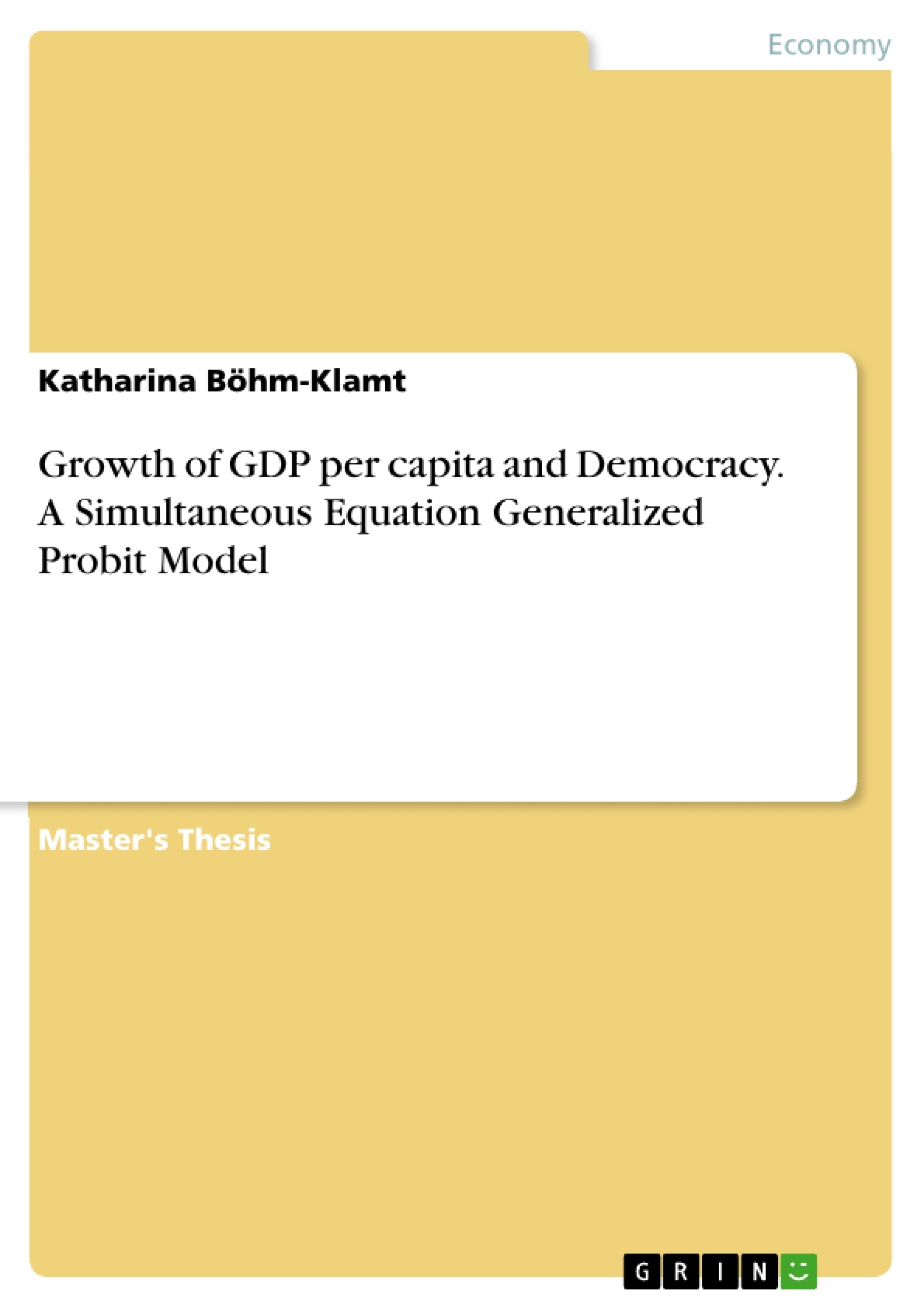The paper examines a potential reverse causality between the growth of GDP per capita and Democracy (data from Policy IV project). Therefore, a simultaneous equation generalized probit model is used. In the first step, the model is estimated under the assumption that the relationship between economic growth and democracy is linear and in the second step under the assumption the relationship is quadratic. Additional exogenous variables are the degree of urbanization, the age of the regime and the percentage of non-fuel exports in total exports. Further, the influence of religion is taken into account, whereby religion and ethnicity are distinguished. It is observed that the ethnical fragmentation has the opposite effect of religious fragmentation.
The outcomes suggest that economic growth and the degree of a country´s democratization indeed are mutually dependent and should not be treated as independent. Additional the outcomes confirm the idea that the relationship between growth and democracy is quadratic.
Inhaltsverzeichnis (Table of Contents)
- Introduction
- Framework for the Empirical Analysis
- Methodology
- Data
- Preliminaries
- Procedure
- Endogenous Variable: Growth.
- Endogenous Variable: Non-Democratic.
- Exogenous Variables: .
- Empirical Findings
- Direction of Effects .
- Squared per Capita Growth and the Policy Variable
- Communism .
- Conclusion
- A Mathematical Appendix
- Reduced Form
- Corrected Variances
Zielsetzung und Themenschwerpunkte (Objectives and Key Themes)
This master's thesis investigates the bidirectional relationship between economic growth and democratic development. The study employs a simultaneous equation system with a generalized probit model to examine how democracy influences growth per capita and vice versa. It focuses on a cross-sectional analysis of more than 107 countries, examining data from 1986 and 2000.
- The impact of democracy on economic growth per capita
- The effect of economic growth on democratization
- The simultaneous relationship between democracy and growth
- The non-linear nature of the relationship between growth and democracy
- The robustness of the findings across different model specifications
Zusammenfassung der Kapitel (Chapter Summaries)
The introduction presents the existing literature on the relationship between democracy and economic growth, highlighting the debate about whether one positively influences the other or whether a bidirectional relationship exists. The study proposes to investigate this relationship using a simultaneous equation system with a generalized probit model.
Chapter 2 outlines the methodology used for the empirical analysis, emphasizing the use of a simultaneous equation system with a generalized probit model. This framework allows for the examination of both the direct and indirect effects of democracy and growth on each other.
Chapter 3 details the data set used for the study, describing the endogenous and exogenous variables employed in the model. It provides information on the specific data sources and variables used for measuring economic growth and democracy.
Chapter 4 presents the empirical findings of the study, exploring the direction of effects between democracy and economic growth. It examines the impact of growth on democracy, considering both linear and non-linear relationships. The chapter also assesses the robustness of the findings across various model specifications.
Schlüsselwörter (Keywords)
This study focuses on the relationship between democracy and economic growth, using a simultaneous equation system with a generalized probit model. Key concepts include: simultaneous equations, generalized probit, democracy, economic growth, cross-sectional analysis, robustness checks, linear and non-linear relationships.
- Quote paper
- Katharina Böhm-Klamt (Author), 2015, Growth of GDP per capita and Democracy. A Simultaneous Equation Generalized Probit Model, Munich, GRIN Verlag, https://www.grin.com/document/384280



